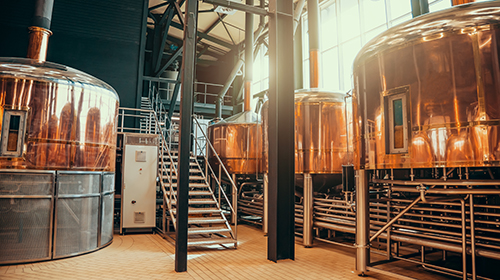
As a commercial brewery, maintaining the freshness of your craft beer will ensure customer satisfaction and preserve the unique flavors that set your beer apart. In a competitive market where consumers have multiple choices, the freshness of your craft beer can be a significant differentiator that drives repeat business and enhances your brewery’s reputation.
Several factors can compromise the freshness of beer, leading to undesirable changes in taste, aroma, and overall quality, ultimately affecting your brand’s integrity. These tips to keep your craft beer fresh for longer will help you uphold the standard of excellence that your customers expect and deserve.
Regularly Clean and Sanitize Equipment
Maintaining a rigorous cleaning and sanitizing schedule for all brewing and storage equipment is essential to ensure the freshness and quality of your craft beer. Contaminants, such as bacteria and wild yeast, can easily compromise its flavor and safety. Implement a strict cleaning regimen for fermenters, storage tanks, lines, and any other equipment that comes into contact with the beer. Using high-quality cleaning agents and sanitizers can effectively prevent contamination.
Keep Detailed Records
Maintaining meticulous records of your brewing, packaging, and storage processes is vital for ensuring the consistent quality and freshness of your craft beer. Detailed logs should include data on production dates, batch numbers, ingredient sources, storage conditions, and any deviations from standard procedures. This information allows you to trace any issues back to their source quickly and implement corrective measures effectively.
Control Humidity Levels
Proper humidity levels are essential in preventing the degradation of your beer’s packaging, which can, in turn, negatively affect the beer itself. To properly store beer after the brewing process, keep the humidity levels in your storage area around 50–70 percent. This range helps prevent the development of off-flavors, maintaining the storage tanks intact, and preserving the beer’s freshness.
Implement a First-In, First-Out (FIFO) System
To maximize the freshness of your craft beer, implement a first-in, first-out (FIFO) inventory system. This method ensures that the oldest batches are out and ready, reducing the risk of aging stock. Proper labeling and tracking of production dates are crucial to effectively managing the FIFO system. Regularly auditing your inventory can help identify and prevent potential issues with stock rotation.
Monitor Oxygen Levels
Oxygen exposure is one of the primary causes of beer spoilage. Even minimal contact with oxygen can lead to oxidation, resulting in stale or off-flavors. After brewing, it is crucial to minimize oxygen introduction during packaging and storage. Utilize oxygen-scavenging bottle caps and ensure that all sealing equipment is properly maintained and functioning efficiently. Regularly checking the dissolved oxygen levels in your beer can help identify and address any potential issues early on.
With these tips, you can significantly extend the freshness of your craft beer in a commercial brewery setting. A consistent focus on these factors will help ensure that your craft beer is fresh and delicious when it reaches the consumer.

